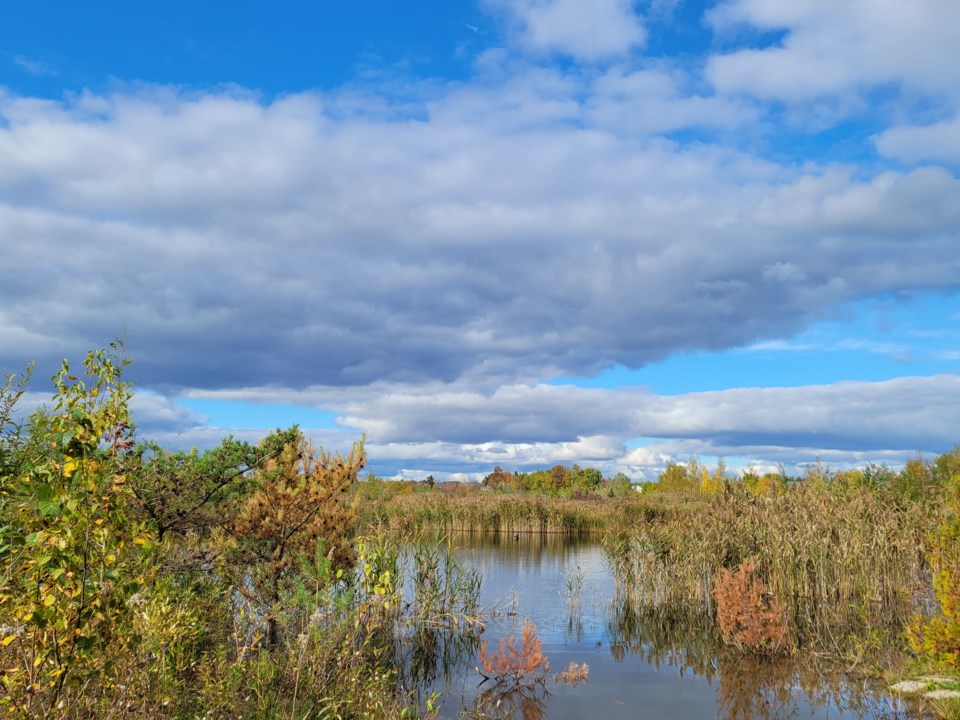The cost to fully implement a new stormwater master plan and flooding strategy could have Innisfil treading water.
Town council approved the two documents during its Jan. 10 meeting, but the process of paying for their recommendations will be determined during future discussions.
The report predicts a nearly $226.7-million price tag, or about $12.6 million annually between now and 2041.
With current funding formulas, the town would be short $9.1 million each year.
One way to pay for that would be a stormwater utility fee, an additional levy on benefiting property owners, as found in 17 other municipalities in Ontario.
Mayor Lynn Dollin urged her colleagues to wade through options carefully.
“It’s worked well in some municipalities and it's crashed and burned in others,” she said. “Particularly a good example for us would be the City of Barrie, where I think the mayor called it something about ‘taxing rain.’”
While decisions on what to incorporate are to be made during future budget deliberations, just getting to this point of a completed document has taken several years.
This is the third stormwater plan for the community, following documents developed in 2012 and 2016. This process, which followed a Phase 1 and Phase 2 Municipal Class Environmental Assessment, was kickstarted during 2021-22 budget deliberations, followed by a bevvy of surveys and open houses — both virtual and in-person — in 2022 and 2023.
Having a master plan is a requirement dictated by the Lake Simcoe Regional Conservation Authority. The update also helps to satisfy changes in regulations since 2016, as well as the growth of the community and a re-prioritization of projects, as necessary.
The town retained Aquafor Beech Ltd. to develop the new plan, with the aim of developing long-term goals to effectively manage stormwater runoff in the municipality, while maintaining its water resources. The new plan calls for maintaining a lot of the work the town is already doing, such as CCTV inspections of sewers and various maintenance initiatives throughout the municipality.
It also gives guidelines on how to improve stormwater management facilities, including clean-out and retrofit opportunities — such as redesigning facilities to incorporate both quantity control and provide water quality benefits — with similar direction for stormwater conveyance infrastructure and control measures like sewers and culverts.
Council was told that 66 per cent of stormwater ponds in the town require a retrofit and that 116 of its culverts need to be replaced.
New facilities are also recommended in Cookstown, Stroud and Sandycove, bringing the total urban area under stormwater management control in the municipality to 34 per cent.
The new plan calls for the town to create a low-impact development (LID) policy that benefits catchment areas with insufficient storage or where facilities have a higher risk of failure. An approvals process would be set up for private property, with tracking for both private and public infrastructure.
It was a recommendation Coun. Alex Waters was surprised to see because of the lack of control the town would have.
“(We’ve) had some experience with subdivisions in the south end of Innisfil and LID on private property didn’t go very well, so I’m surprised that we’re actually looking at this as opposed to a collective system of LID in the community,” he said. “If one person sells to another person and that person doesn’t like the LID measure, it gets ripped out. It’s not something we can predict.”
Aquafor water resources and green infrastructure director Chris Denich was confident, however, that the town can make this work. While there have been mixed results for LIDs in other municipalities, ultimately, it’s a great way to ensure flooding is controlled at the source.
“There are concerns of how to maintain and ensure that those practices are functional on private property and that’s why we’re recommending a tracking program and a protocol,” Denich said. “Ther are very good examples of how to ensure that LIDs are registered on title and have municipal oversight for inspection (and) maintenance.”
The large focus on flood controls in the plan is the major difference in what was presented to council compared to the past, as the first ever flooding strategy for the municipality was included here for consideration.
“Flood events occur in Innisfil regularly and with climate change they do appear to be getting more and more serious and more common over time,” said town capital planning engineering associate Carolina Cautillo. “Our new stormwater management master plan and flooding strategy provide actionable, sustainable and effective solutions (and) will function as a living document with our recommendations reviewed, updated and adjusted as we get new information and new perspectives.”
One such event took place toward the end of the consultation process, as a significant rain event in June resulted in complaints from residents in 30 locations about flooding. However, staff could only get to 10 of those spots, and of the locations that were impacted, not all of them were on the town’s radar of where flooding typically could occur.
The flooding strategy calls for the town to obtain permanent access — either through easement or ownership — when work is done on private property, and study the development of a cash-in-lieu stormwater policy and recommended best practices, including a cost-benefit analysis for land acquisition that could help the town reach its goals regarding stormwater and flooding.
Excluding areas impacted by Lake Simcoe, 20 locations in the town were identified as “high risk” for flood.
Feedback on the master plan and flooding strategy can be provided to the municipality until Feb. 21. To review the document and submit your comments, click here.
A paper copy is also available at Innisfil Town Hall (2101 Innisfil Beach Rd.).



